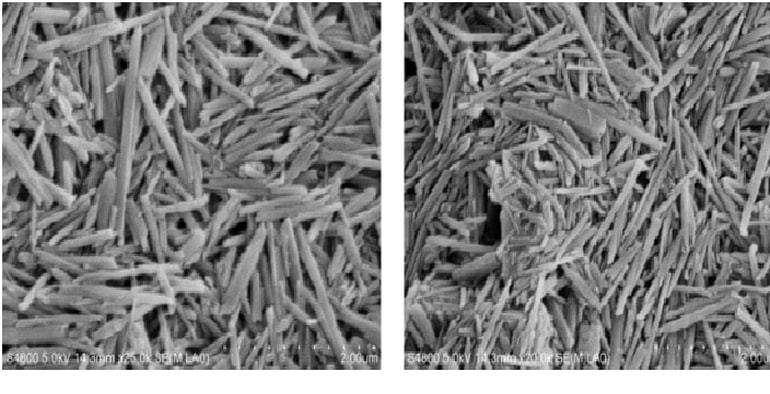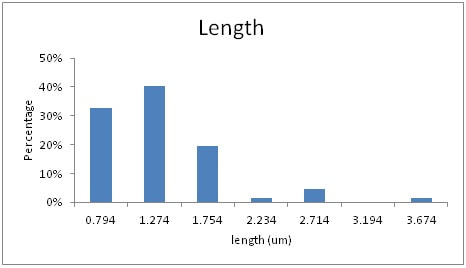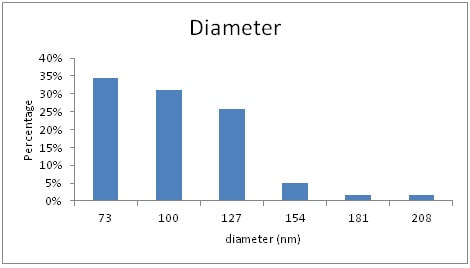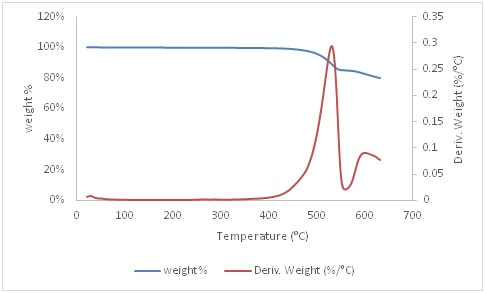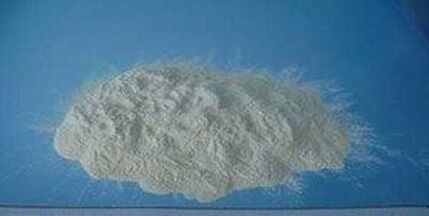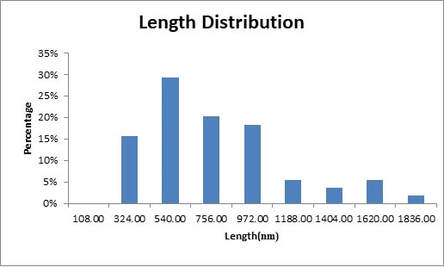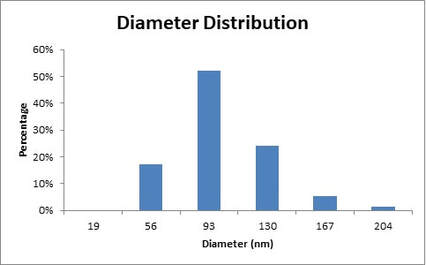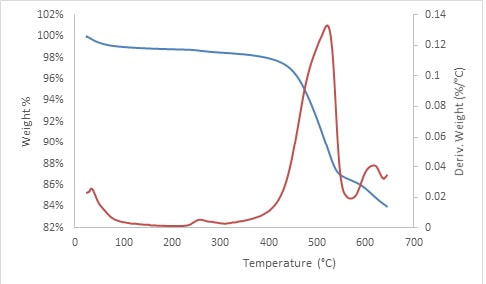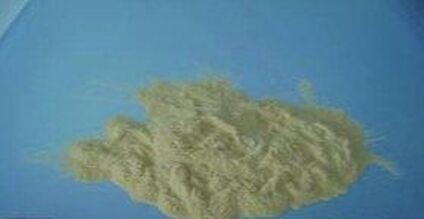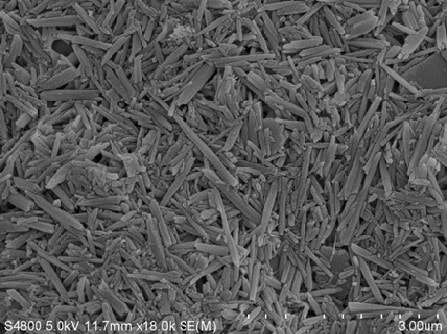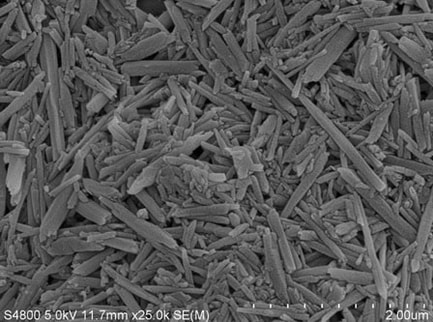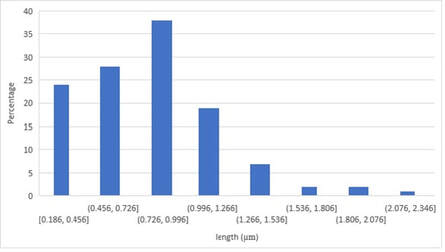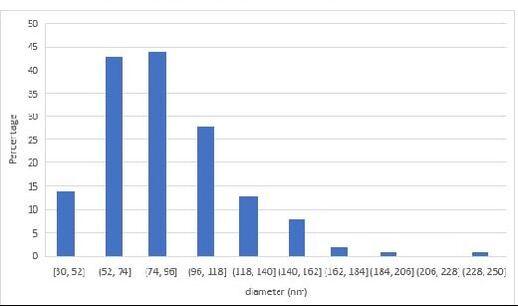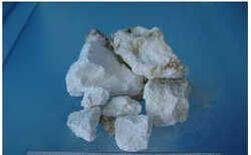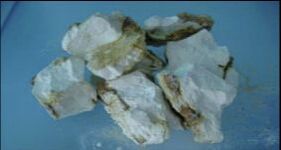Northstar Clay Mine is located in Eureka, UT in the Historic Tintic Mining District. The open pit mine produces high grade Halloysite Clay, a unique nanotubular clay with application in various market segments. This unique deposit contains no heavy metals which are concern in some industries and applications. The deposit is also unique because it contains the longest nanotubes mined to date from any commercially available Halloysite deposits.
Halloysite clay can be sourced from Northstar Mine in three different Grades and forms. One lb (1lb) samples for evaluation are available for purchase.
Halloysite clay can be sourced from Northstar Mine in three different Grades and forms. One lb (1lb) samples for evaluation are available for purchase.
Grade 1 – Pure White Halloysite Clay
This clay is hand sorted to collect only pure white Halloysite. It is crushed and processed to produce a fine powder without exposure to any harsh solvents and chemicals. The only aqueous exposure is to water. There are no impurities (i.e. kaolin, alunite, iron oxide or trace elements such as Ca, Mn, K or Na). It is pure halloysite clay with intact, uniform, long nanotubes.
Halloysite Scanning Electron Micrographs : Tube’s length 1.2 ± 0.4 µm (1200 nm + 400 nm) and broad diameter distribution from 73 to 120 nm with average 90 nm.
This clay is hand sorted to collect only pure white Halloysite. It is crushed and processed to produce a fine powder without exposure to any harsh solvents and chemicals. The only aqueous exposure is to water. There are no impurities (i.e. kaolin, alunite, iron oxide or trace elements such as Ca, Mn, K or Na). It is pure halloysite clay with intact, uniform, long nanotubes.
Halloysite Scanning Electron Micrographs : Tube’s length 1.2 ± 0.4 µm (1200 nm + 400 nm) and broad diameter distribution from 73 to 120 nm with average 90 nm.
Typical Halloysite Nanotube Characteristics: Zeta potential -21 ± 2 mV. Contact angle 23 ± 10º.
Grade 1 Halloysite Nanotube Length and Diameter Distribution (Average Distribution for Grade 1 Material)
Grade 1 Halloysite Nanotube Length and Diameter Distribution (Average Distribution for Grade 1 Material)
Grade 2 Halloysite Clay - White to Light Tan Halloysite
Grade 2 contains smaller length tubes with greater variable size distribution. It may not be as white as Grade 1 due to presence of minor amounts of iron oxides. Impurities may include some kaolin plates. Trace amounts of K, S, Na or Ca may be present with the clay due to presence of limestone, CaCO2 and other minerals commonly found in this type of deposit.
Grade 2 contains smaller length tubes with greater variable size distribution. It may not be as white as Grade 1 due to presence of minor amounts of iron oxides. Impurities may include some kaolin plates. Trace amounts of K, S, Na or Ca may be present with the clay due to presence of limestone, CaCO2 and other minerals commonly found in this type of deposit.
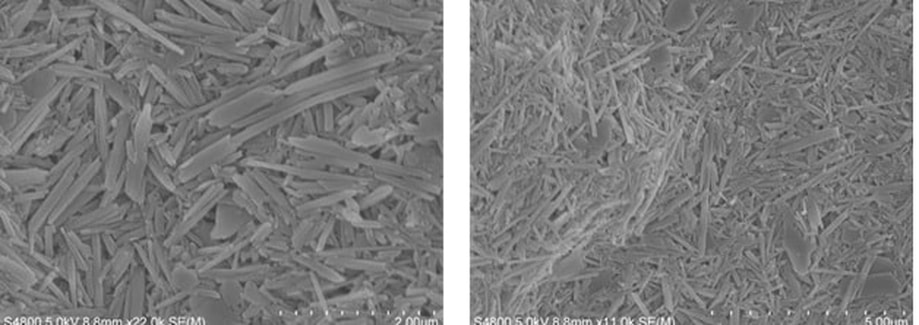
Halloysite Scanning Electron Micrographs: Grade 2 tube’s length (67%) falls in 720 ± 220 nm and 93 % tube’s diameter falls in 93 ± 37 nm
Typical Halloysite Nanotube Characteristics: Zeta potential -25.3 ± 1 mV. Contact angle 18.5 ±2.5º
Grade 2 Halloysite Nanotube Length and Diameter Distribution (Average Distribution for Grade 2 Material)
Grade 2 Halloysite- Thermogravimetric analysis
The halloysite tubes stay stable up to 400º C and 16% of halloysite samples degraded till at 510º C with a small bump at 270 C, due to impurities.
The halloysite tubes stay stable up to 400º C and 16% of halloysite samples degraded till at 510º C with a small bump at 270 C, due to impurities.
Grade 3 Halloysite Clay
Grade 3 Halloysite contains smaller tubes, a small percentage of broken tubes, trace amounts of iron oxides making clay light tan/tan in color. It may also contain cubic crystals, kaolin plates and K, S, Na or Ca in small amounts.
Grade 3 Halloysite contains smaller tubes, a small percentage of broken tubes, trace amounts of iron oxides making clay light tan/tan in color. It may also contain cubic crystals, kaolin plates and K, S, Na or Ca in small amounts.
Grade 3 Halloysite Electron Micrographs: Tubes are smaller than Grade 1 and similar to Grade 2 Halloysite. There may be broken tubes and a few admixtures of kaolin and quartz plates. Nanotube diameter is 70 ± 20nm, length is 0.9 ± 0.3um (900 + 300 nm).
Typical Halloysite Nanotube Characteristics: Zeta potential -20 ± 2 mV Contact angle in tablet 21±2º
Grade 3 Halloysite Nanotube Length and Diameter Distribution (Average Distribution for Grade 3 Material)
Grade 3 Halloysite -Thermogravimetric analysis
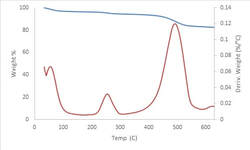
Main phase transition at 490 C- it is normal and very small transition at 270 C, may be it a very small organic admixture (small fraction of a percent).
Unprocessed Clay: Crushed, unprocessed clay can be sourced for evaluation. Samples of Halloysite that would produce Grade 1 or Grade 2 Halloysite are available for purchase.
The Northstar team is ready to discuss your desired application and how our unique Halloysite Nanotubular Clay can meet your goal!
